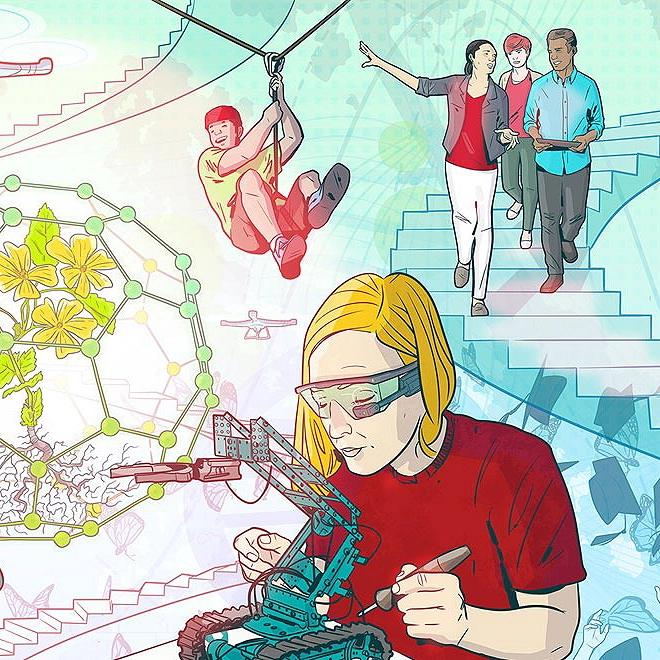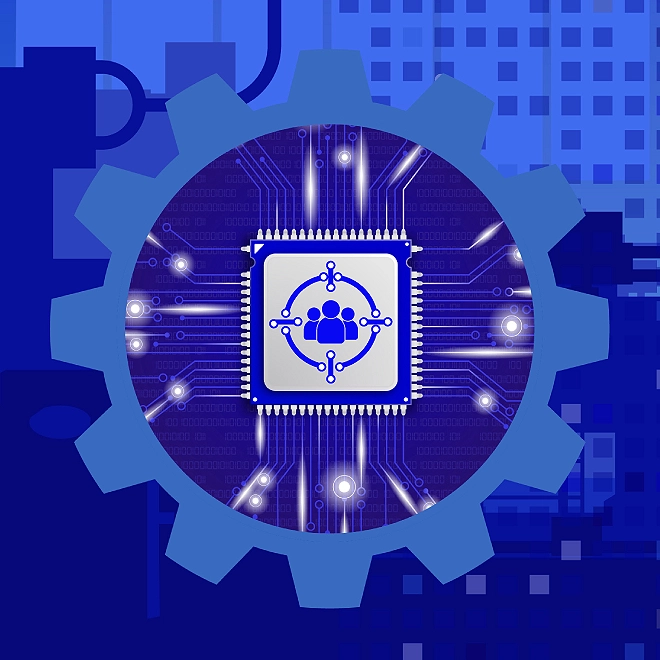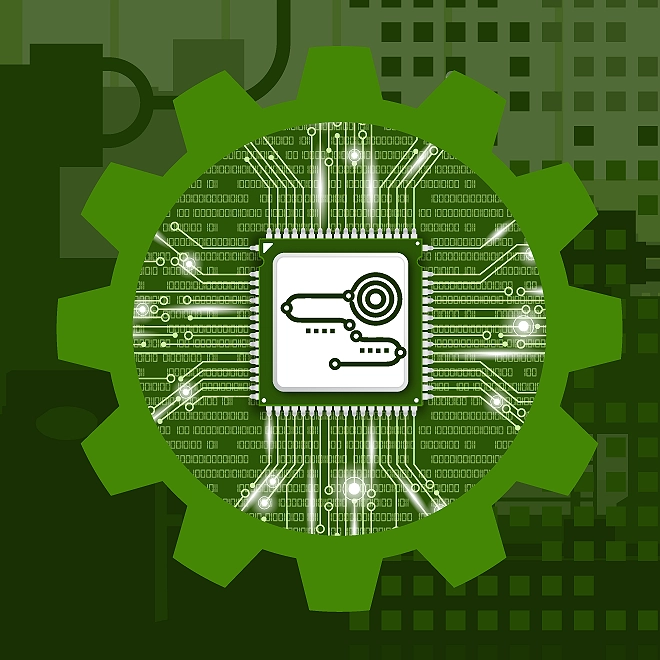Nine big shifts that will determine your future Business of Technology
Why you need to transform your IT department into a company-wide Business of Technology capability
Digital’s impact is pushing organisations beyond the traditional IT model. The ‘Business of Technology’ will be shaped by nine shifts that change how businesses identify, test, evaluate and scale new technologies.
THE growing impact of ‘digital’ on all aspects of business, from strategy to operations, is driving change in organisations that goes beyond the ‘traditional’ IT model. Many contemporary businesses fundamentally reimagine the way the enterprise identifies, trials, evaluates and scales new digital technologies and makes them business relevant. This future ‘Business of Technology’ will likely be shaped by nine big shifts that are all interdependent and need to be applied in concert.
A fundamental mismatch
The pace and scope of digital disruption in the modern world is not slowing down. If anything, developing technologies such as artificial intelligence, the Internet of Things (IoT), robotics and virtual reality mean that businesses will be confronted with successive waves of new digital technologies. The consequent disruptions to industries will be difficult to predict, let alone influence.
Many companies need to design a Business of Technology that is fully capable of dealing with both the threats as well as the opportunities that emerge. However, in organisations that recognise this need for digital transformation, we often observe a jarring mismatch between their emerging digital strategy and their existing – traditional – IT operating model. Symptoms of this are lack of speed, lack of innovation, risk avoidance and shortage of modern digital skills. In other words: isolated ad hoc initiatives that have limited impact on business.
Nine big shifts
Deloitte research identified nine big shifts that will shape the future Business of Technology. The aim is to future proof the entire company and master the capabilities that deliver business-relevant digital technologies rapidly, successively and at scale:
- Rapidly: moving from idea to operational offering in short timeframes, benefitting from the window of opportunity.
- Successively: creating new innovations repeatedly (as opposed to a one-off success), applying a ‘scale or fail’ data-driven mindset where innovations that do not deliver on their promise are killed rapidly.
- At scale: a process and a capability of extending a successful pilot or prototype from a small testing group to a large customer base, contributing to top-queue enterprise income (instead of multiple proof of concepts that stay hidden in small pockets within the organisation).
We call these nine shifts ‘big’ for good reasons. During the last decades, CIOs have continuously adapted their IT department to changes in technology, so what’s new?
This is what’s new: All nine big shifts have an impact that transcends the IT organisation. They impact the business operating model of the enterprise itself and hence, not only impact the CIO, but also the CEO, CFO, COO and Lines of Business Directors. Hence, we prefer the term ‘Business of Technology’. It is not just about an improved operating model for the IT department, but about fundamentally changing the way the enterprise identifies, trials, evaluates and scales new digital technologies to make them business-relevant.

The nine big shifts framework can be used to obtain insights into underlying causality, to design a future Business of Technology and to plan the transition towards it, including nontechnical dimensions such as human capital, culture and leadership. As all the big shifts are relevant and highly interconnected, they need to be applied in concert to achieve desired results, based on an understanding of the company-specific causality between individual shifts.
Importantly, there is no ‘one size fits all’ solution; the nine play out in different ways for different enterprises and need to be tuned to the individual needs, risk appetite and strategic priorities of the organisation.
The nine big shifts framework
To achieve both short-term and long-term digital opportunities, organisations require their Business of Technology to be capable of accountancy for each of these nine big shifts. By viewing them holistically, it becomes evident that they are not isolated phenomena but, rather, mutually interdependent events. There is a profound causality between these shifts that is company-specific. Missing one or more big shifts will likely result in a Business of Technology that is ill-equipped for the digital era.

The booster shifts
The first three shifts (1, 2 and 3) describe fundamental changes in the Business of Technology, which are boosters for realising the ability to innovate ‘rapidly’, ‘successively’ and ‘at scale’.
Big shift 1: Agility and speed – As disruption becomes more pervasive, organisations will need to change course in real time based on market realities. Companies can choose to aspire to be a ‘fast moving experimenter’ who always has multiple smaller experiments in parallel, which they either scale if data tells them they are successful or kill if they are not. Alternatively, they can be ‘talent and strategy led’ with a limited number of big bets, based on a long-term strategy.
Enterprises that learn by experimenting need mature agile and DevOps capabilities, combined with concepts such as Lean Start-up and Design Thinking. Most companies have started with agile on a small scale but taking it to the programme or enterprise level is more complex. Organisation design principles need to be adapted, impacting the culture and work style. The same is true for funding, governance and sourcing. Scaling agile to enterprise level also requires capabilities such as Enterprise Architecture (EA) to be redefined to an incremental and just-in-time iterative approach.
Agile is an approach to software development that assists teams in responding to the unpredictability of designing and constructing software. It uses incremental, iterative work sequences that are commonly known as sprints. Learn more about agile transformations at the enterprise level.
Big shift 2: Innovation and ecosystems – To innovate repeatedly, companies need to organise themselves to do so. Companies who are good at this have organised their digital disruption radar screen to sense “what’s coming in digital technology”. They have well prepared joint business and IT meetings in which they identify potential digital disruptive technologies, both as a potential threat as well as an opportunity to disrupt others or allow them to enter a new market.
To repeatedly innovate within the context of an ecosystem, companies need to have a pipeline of ideas and related initiatives and manage these as an innovation portfolio knowing that many initiatives will fail. Apart from developing a portfolio of initiatives that will deliver the sought-after results, the organisation also needs to learn how to design an ecosystem of actors with complementary capabilities to collaborate and take joint risks in value creation. By joining resources, the business ecosystem can create new business models, services and customer experiences that would have been out of reach of the individual actors.

Big shift 3: Blurring boundaries – Many IT organisations still engage with the business through a demand/supply model. Expectations are, however, shifting. In the digital era, companies are likely to move so that virtually every line of business and every worker has a level of technology skill. To engage in and contribute to a tech-driven business environment, staff and management should become tech fluent.
Fuelled by trends such as agile, the cloud and tech fluency in lines of business, we see a shift towards IT capabilities being organised closer to – or even embedded within – the business. This shift “disrupts” the traditional monopoly of the IT department on access to, knowledge about and funding for information technology. Increasingly business unit directors manage their IT/digital as an integral part of their business, like they do with other assets under their command and control.
Showstopper shifts
The next three big shifts (4, 5 and 6) describe fundamental changes that are prerequisites for the first three. If not taken care of, they will be showstoppers. They represent the part of the digital transformation many business representatives do not want to be bothered with, but which require major (and sometimes painful) decisions that need to be taken.
Big shift 4: Future workforce – Enterprises will experience huge people challenges as existing IT tasks and capabilities disappear, remaining IT tasks transform and new IT tasks emerge. Technologies such as AI, the IoT and robotics will not only “robotise away” many human intensive IT tasks in the existing IT team, they will also create a need for tech-jobs that did not exist before, that are strategic for the future business and require new skillsets such as design thinking, human-centric design, data science, growth hacking and hypothesis generation. Many of these skills are scarce in traditional IT organisations, so acquiring them will likely be a major challenge for existing IT workforces, even more than acquiring new technical skills. In fact, in a lot of organisations these technical skills are delivered by subcontractors and consulting firms, although these skills are increasingly considered to be ‘strategic’.
The future IT organisation will also move from structures based on hierarchies of functional groupings. Instead, their primary units will be self-organising pods and teams. Rather than maintaining a fixed structure for a longer period, the new IT organisation will be fluid as new pods/ teams can be formed and existing pods/teams dissolved as the need arises.
Big shift 5: Governance and funding – Due to digital, the role of technology in the enterprise is set to expand, so three fundamental changes should be considered. First, a larger share of the budget should be allocated to innovation at the cost of traditional technology expenses. Second, the total technology spend is likely to increase, since new digital technology cannot be funded from cost savings alone. Third, companies may choose to fund digital innovation from outside the traditional IT budget.
In digital companies, project portfolio management is giving way to product portfolio management with product funding replacing project funding. In these product-centric organisations, long-lived agile teams manage both ‘run’ and ‘change’ for digital products, which are managed under a single product backlog. Once the product is funded, the product manager and agile team jointly decide how to spend the budget, allowing maximal flexibility in allocating budget to market opportunities.
Big shift 6: Leadership and culture – Digital leadership is about having a compelling digital vision to get people pulling in the same direction. Digital leaders have a distinct set of skills and capabilities. They have a deep understanding of the digital world in combination with business acumen and domain-specific knowledge. They are change agents, strong in building relationships and in influencing others to create buy-in and build trust. And – on top of all that – many are good at creating and developing teams.
A digital way of working has a distinguished culture and set of values, but there is not a single configuration of digital DNA best for all enterprises. Two successful archetypes are:
- Talent & Strategy Leaders are digitally mature businesses characterised by a core focus on the strength of their talent and strategy. Compared to the average, these businesses have a long-term vision, strong leadership and a clear digital strategy. They recognise that success is dependent on having the best people, equipping those people for success and making them want to stick around.
- Fast Moving Experimenters represent the other successful digital strategy. They can be characterised by an appetite for experimentation and risk, and their ability to ‘fail or scale’ digital initiatives at a fast pace. These organisations are well organised for digital (for example, with appropriate management structures and processes) and work in an agile way. They also have strong leadership to direct the experimentation approach.
Macro forces shifts
The last three big shifts (7, 8 and 9) correspond with three clusters of technology macro forces discussed in the Deloitte 2019 Tech Trends: digital, data and cloud. Each of these has already had a major impact but will continue to play out in new ways. These three big shifts are named “Organise for ...” to signify it is not about the tech trend itself, but about how enterprises can adapt their Business of Technology to realise the potential of this technology.
Big shift 7: Organise for digital – Together with cloud and data, digital has been one of the three macro forces shaping business technology innovation in the past decade. This first wave is characterised as focusing on digital experience. Although this first wave is still playing out, the next wave is rapidly approaching. This will be driven by technologies such as augmented reality, virtual reality, IoT, digital twins and intelligent interfaces (voice control, virtual assistants). Together, we refer to this as digital reality.
Enterprises shouldn’t ignore the power of digital experience and digital reality and need to organise themselves to make digital transformation a success. The questions are: Who will lead? and Where to organise ‘digital’? Will it be one of the business executives with a focus on the customer, for example, from sales? If this choice is made, he/ she can then own the physical channel (stores) as well as the digital channels (web and app). Will it be a new role of chief digital officer or does the CIO shift to the role of digital leader, simultaneously offloading the operational IT responsibilities to a chief technology officer (the COO of IT)? There is no ‘one size fits all’ solution.
Big shift 8: Organise for data – The role of data and analytics is shifting from merely analysing what has happened (the rear-view mirror) to real-time views into what is happening and even further to the ability to predict what will happen next and to prescribe a recommended response. Artificial intelligence will be the main driver of this shift in the next decade.
Due to this development, data organisations will extend their scope. They still need to cater for the traditional focus areas of operational efficiency and risk management. Increasingly, they augment their scope with value creation.

The model to consider is to have a central team responsible for developing advanced data capabilities, standards and tooling that are shared with domain teams which are organised where the business value is created. These domain teams have in-depth knowledge of data analytics needs of specific processes and tap into the expertise of the central team. The delineation between central team and decentralised teams can vary across domains.
Big shift 9: Organise for cloud – Traditionally, centralised IT departments supported the business with services such as selecting, deploying and scaling applications and infrastructure. However, for many businesses, there is no unique business value in maintaining servers and datacentres. Adoption of cloud computing combined with automating tasks previously done manually (for example, provisioning, patching and backup) means that traditional management of these resources by central IT will, in time, cease to exist.
By adopting cloud resources, the size of the central IT organisation decreases (as it no longer provides data centres) and the role of the central IT organisation changes. Although the size decreases and the role changes, the importance will certainly not decrease. In the new model, the role of the IT organisation regarding infrastructure will focus on:
- the foundational layer of the technology stack, such as network and connectivity services
- platform standardisation and consistency across business units for applications used throughout the enterprise where efficiency and economies of scale outweigh the need for differentiation and business-unit alignment
- compliance with cybersecurity standards and vigilance in risk management practises.
This ‘new model’ will have a significant impact on the traditional IT organisation, as the IT organisation model evolves to adopt this new role, new services and new capabilities.
Analyse the nine shifts – and bite the bullet
Business people face a complex environment, not unlike that confronting the captain of an aircraft carrier. Although this ‘platform’ was designed for a specific purpose 10-20 years earlier, they are expected to maintain and run a tight ship capable of adopting technological systems for which the platform was not originally designed. In addition, the carrier will undergo extensive overhauls to remain combat ready, including modernising the propulsion system, replacing the rudder and – above all – adapting the crew for new realities.

If business people want to benefit from the new digital technologies on offer to ensure their organisation delivers rapidly, successively and at scale, then they should address the whole technology platform – and not just the latest rocket system bolted onto the deck.
Here’s a typical pattern of causality that is not uncommon for many companies. If an organisation concludes that its ability to deliver digital innovation rapidly (1) needs to be strengthened, then a move towards agile ways of working and DevOps (2) would be a prudent step to take. Especially when that decision would be backed by a strategic decision and investment to go for a cloud first strategy (3), delivering also the capability to connect to cloud based ecosystems (5) that will help the organisation to innovate successively (6) and at scale (4). However, this causality comes with a price. The move to a cloud first strategy also involves a large shift in the capability set of the current tech team (7): not only in terms of skills disappearing and new skills being developed and recruited, but also in the way of working and the Digital DNA that often is not engrained within the current tech team (8).
The decision to move towards agile ways of working and DevOps (2) also has implications for governance, funding and risk (9), since the existing funding model simply does not support ‘customer journeys’, ‘end-to-end processes’ and ‘rapid experimentation’. In short, there is a sound causality between these nine big shifts that every organisation needs to determine for itself, including the difficult choices that come with it.
Transitioning to a model where technology is fully embedded in the enterprise is a prolonged and complex endeavour. To achieve this, enterprises need to reimagine the role of technology and fundamentally change the way they identify, trial, evaluate and scale new digital technologies and make them business relevant. Technology should become a fully integrated part of the enterprise operating model, moving beyond the traditional ‘IT’ operating model.
With technology as the catalyst, organisations have the opportunity to either disrupt and transform – or fall behind. There is no free lunch when it comes to creating a future-proof Business of Technology set of capabilities. The digital leader will likely face dilemma’s and trade-offs that will hurt, that will cost money and that – at the end of the day – will most definitely pose risks. And these dilemma’s and trade-offs are company-specific, so there’s no “free copying” either.
The Deloitte publication Reimagining the role of technology uses the metaphor of the company as an engine with multiple gears, in which every gear moves in unison so that the engine operates efficiently. If a single gear breaks, the enterprise grinds to a halt. This is a powerful way of thinking about the nine big shifts. Each shift can individually drive value for the business, but only when applied in concert with each other, the engine will deliver the full power for which it was designed.
What’s at stake: Moving from ‘doing digital’ to ‘being digital’
When organisations embark on their digital journey, they typically pass through several phases. During earlier phases, this mostly means a focus on ‘doing digital’. This involves leveraging digital technologies to extend operational capabilities (often focussed on customer channels only), while still relying on traditional business, operations and talent.
Enterprises that have reached higher levels of digital maturity or that started as digital businesses are perceived as ‘being digital’. For these enterprises, digital traits and a digital mindset define their corporate outlook and behaviour. Rather than merely digitising customer touchpoints, they reimagine new ways of engaging with customers: new processes, new customer journeys, new ecosystems and partners. Similarly, rather than simply ‘doing’ digital projects, they have adopted an integrated strategy that makes them digital at their core.
A future Business of Technology, shaped by the nine big shifts, enables companies to move from ‘doing digital’ to ‘being digital’.

Technology Industry
The rapid pace of technological change is one of the biggest challenges facing industry executives today. Our expertise focusses on helping technology companies of all shapes and sizes across the world deal with the demands of adapting their business strategies to succeed in a changing market.



